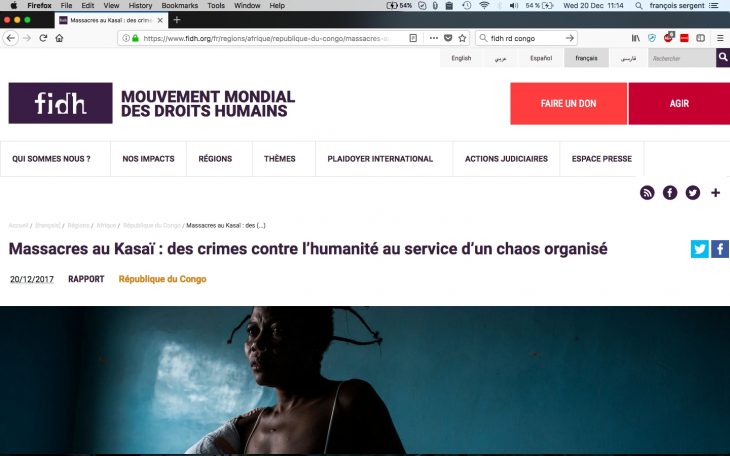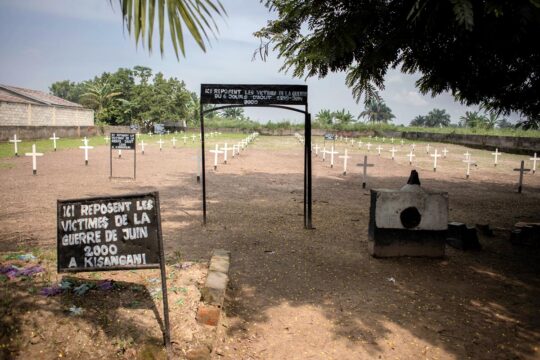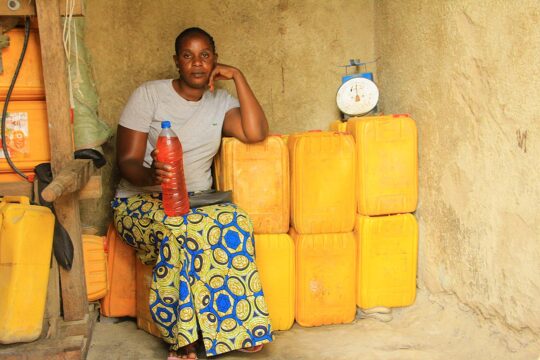Security forces and an army-backed militia planned massacres in an opposition stronghold in the Democratic Republic of Congo, human rights activists charged Wednesday, calling the killings "crimes against humanity".
The southern Kasai region suffered "one of the worst human rights crises in the world" between March and July, the Paris-based International Human Rights Federation (FIDH) said in a report compiled with partner rights groups in the country.
It includes heart-rending testimony such as that of a 27-year-old woman who described soldiers attacking her village and burning down houses. As she fled, she "saw a lot of corpses... of children, of villagers."
The FIDH said the atrocities "were perpetrated mainly by elements of the Bana Mura militia at the instigation and with the support of security forces... against civilians of the Luba ethnic group."
The Luba are seen as supporting the anti-government Kamwina Nsapu militia, while other ethnic groups make up the Bana Mura militia active in Kasai.
In one of the worst attacks blamed on Bana Mura, the remote village of Cinq was "totally destroyed" and several female survivors said they were raped or sexually mutilated.
Several of their children were killed by militiamen with machetes, the 100-page report said.
- Kabila anniversary -
The Catholic Church has said the violence claimed more than 3,300 lives. The United Nations for its part has counted 87 mass graves and documented some 1.4 million displaced people.
The conflict erupted in September 2016 after government forces killed a tribal chieftain, known as the Kamwina Nsapu, who rebelled against President Joseph Kabila's regime in Kinshasa and its local representatives.
The release of the report comes a year to the day since Kabila refused to step down at the end of his second term, sparking a political crisis in the vast former Belgian colony.
The Catholic Church brokered a deal on New Year's Eve 2016 enabling Kabila to stay in office pending elections to be held in 2017. Those elections, in turn, were postponed to December 23, 2018.
The opposition has insisted that Kabila leave by the end of this year.
The FIDH said Lubas were "massacred in several dozen villages... because of their ethnicity, their supposed political affiliation with the opposition and their supposed support or membership" of Kamwina Nsapu.
"The crimes perpetrated... were planned, ordered and led by agents of the Congolese state" and the Bana Mura militia, it said, adding that the atrocities should be considered crimes against humanity.
The FIDH compiled witness testimony in July at a refugee camp in neighbouring Angola, speaking to 64 people, most of them Lubas, some with amputated limbs, permanent disfigurations or severe burns.
- Atrocities on both sides -
The report said anti-government Kamwina Nsapu militiamen earlier carried out "summary executions, often in the form of decapitations", after which they displayed the severed heads in the villages.
Two United Nations experts were killed in March while investigating the violence, of whom one was decapitated.
The atrocities led Congolese "defence and security forces to carry out disproportionate acts of reprisal" including against civilians, the FIDH said.
The UN, in a report released in August, also blamed state agents for more than 250 "extrajudicial or targeted killings" of civilians in the Kasai region from mid-March to mid-June.
Like the FIDH, UN investigators interviewed refugees in Angola who described atrocities at the hands of government troops and the Bana Mura as well as the anti-government Kamwina Nsapu militia.
The Congolese government questioned the "impartiality" of the probe, saying it was based "on testimony lacking in credibility".
The FIDH said it has the names of "at least 50" suspected perpetrators of atrocities which it could hand over to the International Criminal Tribunal in The Hague if Kinshasa fails to mount a serious investigation.





